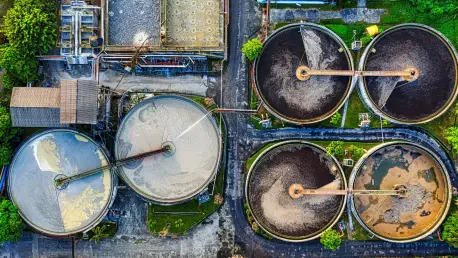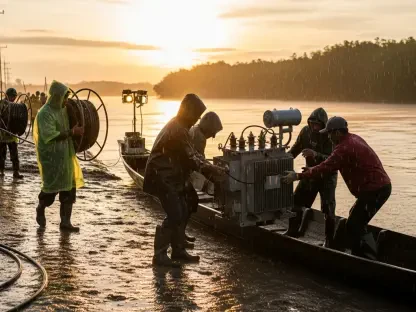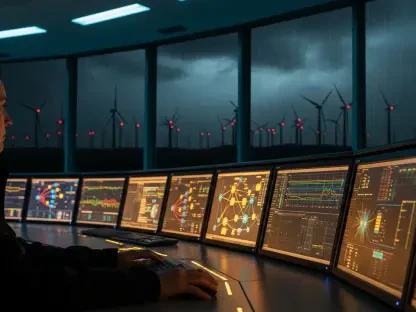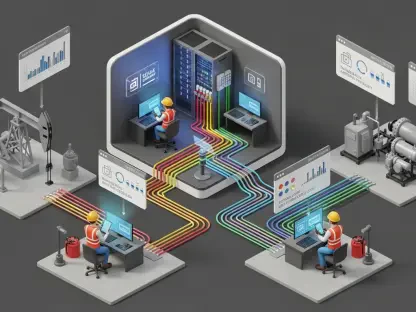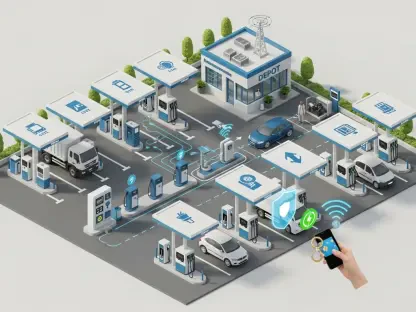In a world grappling with mounting organic waste and an urgent need for sustainable energy, a clean energy startup has emerged with a groundbreaking solution that tackles both challenges head-on. Kore Infrastructure, a company dedicated to innovation, has spent nearly two decades refining a technology that transforms waste from landfills, farms, and factories into dispatchable renewable energy and valuable byproducts like biocarbon. This approach not only reduces the environmental burden of waste accumulation but also provides a reliable power source that can be activated on demand, unlike intermittent renewables such as solar or wind. By addressing global issues of waste management and energy grid stability, Kore is carving a path toward a cleaner, more resilient future. Their mission resonates with escalating demands for practical, scalable solutions that align with sustainability goals while delivering economic benefits to industries and communities alike.
Pioneering Technology for a Sustainable Future
Kore Infrastructure’s core innovation lies in its use of pyrolysis, a process that heats organic waste in the absence of oxygen to produce methane and solid carbon products without combustion. This technology, embodied in their Modular Conversion Reactor (MCR), operates as a closed-loop system, ensuring that no harmful emissions escape into the atmosphere. The result is renewable natural gas and electricity that can power industries or feed into the grid, alongside biocarbon—a versatile material with applications in agriculture and manufacturing. What sets this system apart is its ability to deliver dispatchable energy, meaning it can run continuously as long as waste feedstock is available, providing a stable baseload power source. This reliability addresses a critical gap in the renewable energy landscape, where fluctuating sources often struggle to meet consistent demand, particularly for high-energy sectors like data centers and electric vehicle infrastructure.
Beyond its energy output, the MCR technology offers a carbon-negative impact by sequestering carbon in biocarbon, preventing the release of methane and CO₂ that would otherwise occur as waste decomposes in landfills. This dual benefit of waste reduction and emissions mitigation positions Kore as a leader in the clean energy sector. The company’s focus on practicality ensures that the system is not just a theoretical concept but a viable solution for real-world challenges. By converting waste directly into usable resources, the technology minimizes environmental harm while creating value from materials that would otherwise be discarded. Regulatory compliance and environmental benefits have been demonstrated through rigorous testing, proving that this approach can scale to meet the needs of diverse industries while aligning with global sustainability targets and reducing reliance on fossil fuels.
Strategic Deployment at Waste Sources
One of the standout aspects of Kore Infrastructure’s strategy is the localized placement of their reactors directly at waste sources such as landfills. This approach eliminates the high costs and carbon footprint associated with transporting waste over long distances, maximizing efficiency and reducing operational expenses. By integrating reactors on-site, landfill operators also gain financial advantages through extended site lifespans, as waste is diverted from piling up. Additionally, the electricity generated can be used locally or fed into the grid, supporting nearby industries or utilities grappling with rising energy demands. This localized model not only addresses logistical challenges but also fosters partnerships with waste management entities, creating a symbiotic relationship that benefits all parties involved in the process.
The modularity of Kore’s reactors further enhances their deployment potential, allowing for rapid setup once regulatory approvals are secured. A new reactor can become operational in as little as six months, offering a swift response to urgent energy and waste management needs. Plans for a commercial plant near Los Angeles, expected to be completed by spring of next year, exemplify this scalable approach. Such projects highlight how strategic placement and modular design can transform waste-heavy areas into hubs of renewable energy production. This method also aligns with increasing regulatory pressure to divert organic waste from landfills, providing a practical solution that meets compliance requirements while generating economic and environmental value for communities and businesses alike.
Addressing Modern Energy Demands
As energy consumption continues to soar with the rise of technologies like AI data centers and electric vehicles, the need for reliable, sustainable power sources has never been more pressing. Kore Infrastructure’s technology fills this gap by offering dispatchable renewable energy that ensures grid stability even during peak demand periods. Unlike solar or wind, which depend on weather conditions, the MCR system operates continuously, powered by a steady stream of organic waste. This consistency makes it an ideal solution for industries and utilities seeking to balance energy needs with sustainability commitments. The ability to provide baseload power positions Kore as a critical player in diversifying energy grids and reducing dependence on traditional fossil fuels that contribute to climate change.
Moreover, the carbon-negative nature of Kore’s process adds a layer of environmental responsibility to its energy production. By capturing carbon in biocarbon instead of releasing greenhouse gases, the technology helps mitigate the impact of industrial activities on the planet. This aligns with global efforts to achieve net-zero emissions and combat the escalating effects of climate change. The economic viability of the system, designed to operate without heavy reliance on subsidies, further ensures its appeal to stakeholders looking for self-sustaining solutions. As energy demands evolve, Kore’s innovative approach offers a blueprint for integrating waste management with power generation, paving the way for a future where sustainability and reliability go hand in hand.
Reflecting on Milestones and Future Impact
Looking back, Kore Infrastructure’s journey showcases remarkable dedication, with a significant milestone achieved several years ago during a commercial-scale demonstration in Los Angeles. Partnering with a major utility under stringent regulatory oversight, the project validated the reliability and environmental advantages of the MCR technology. This success underscored the potential for carbon-negative energy production and set a precedent for future deployments. The pilot proved that transforming organic waste into power and biocarbon was not just a concept but a tangible reality, capable of addressing intertwined challenges of waste accumulation and energy scarcity with measurable impact.
Moving forward, the focus shifts to scaling this proven technology to meet escalating global needs. Stakeholders in waste management and energy sectors are encouraged to explore partnerships that can accelerate the adoption of modular reactors at waste sources worldwide. Policymakers might consider frameworks that streamline approvals for such innovative systems, ensuring quicker integration into existing infrastructure. As Kore continues to build on past achievements, the broader vision remains clear: leveraging waste as a resource can redefine energy landscapes, offering sustainable solutions that benefit both the environment and the economy in equal measure.
